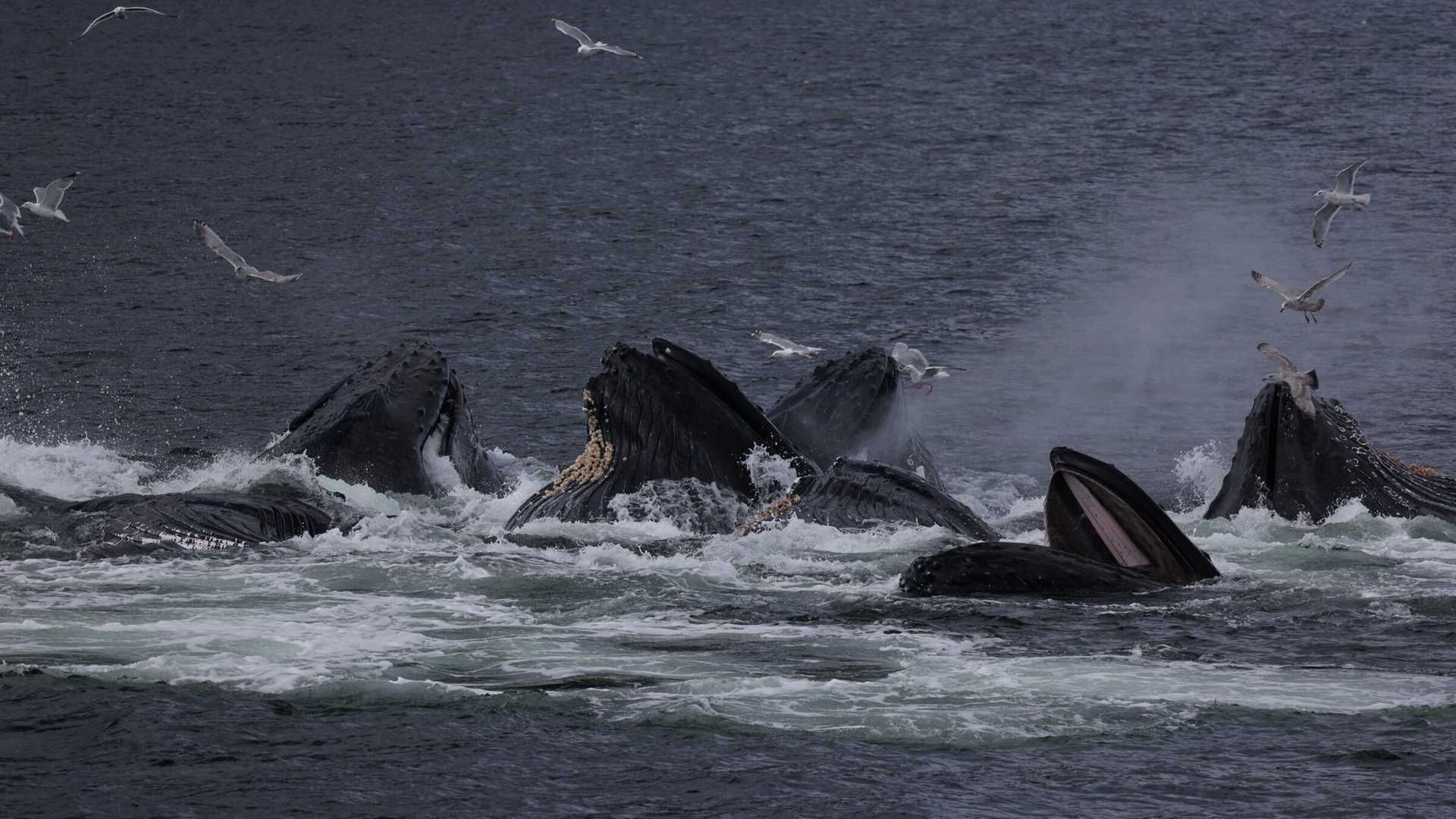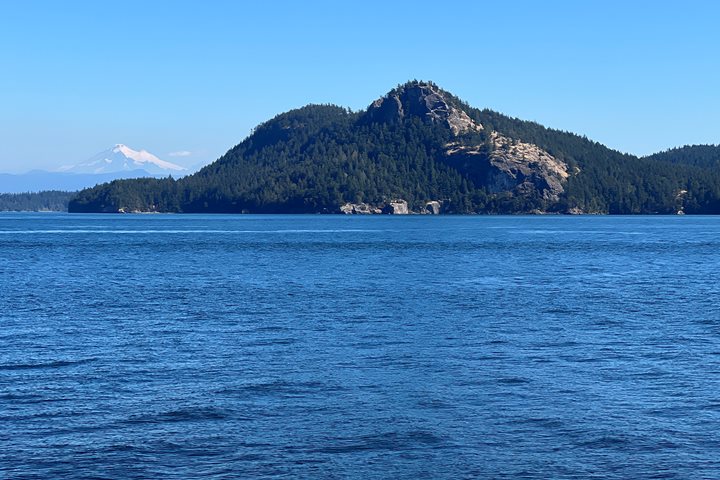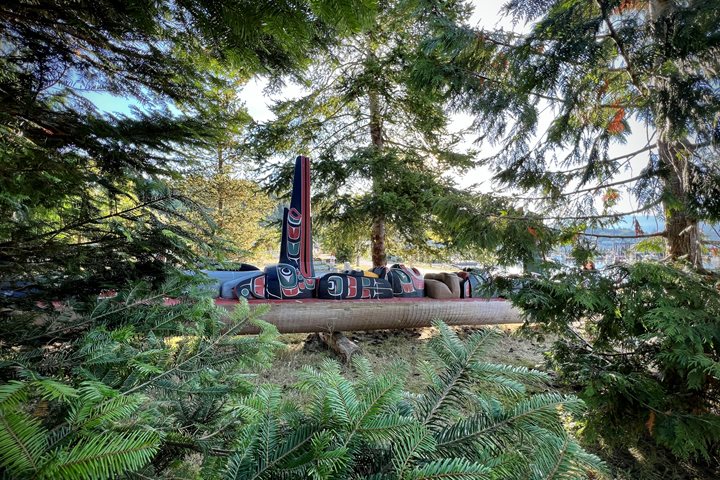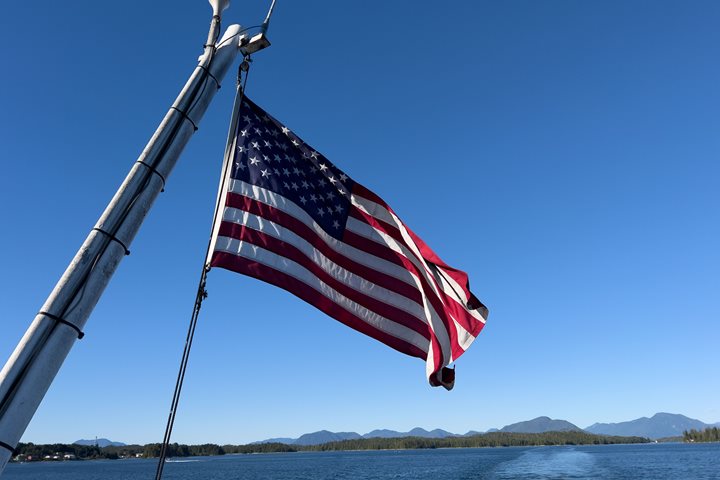National Geographic Sea Bird started its day with the rising of the sun. Many guests moseyed up to the sundeck to begin the day with a stretch while others searched for megafauna off the bow. The clouds above parted and gave way to bright sunshine that baked the boat to a toasty 60 degrees or so. The fair weather and bears ashore were a welcome start to the morning, but they were not the day’s highlight.
At roughly 0900, the bridge located a solo humpback whale breaching and slapping its pectoral fin. Believing that the whale may have been signaling to others of its kind, the natural history team started to scour our surroundings for distant humpbacks. Remarkably, we spotted a whale in short order some two miles away, but its blow appeared uncharacteristically angled. To myself and our other naturalists, this was the unmistakable sign of a sperm whale. An incredibly deep diving species, to see this leviathan at the surface is a rare treat–especially in Southeast Alaska. None of our staff members have ever seen one in this region. Once the subject of intense whaling in Alaska and worldwide, the sperm whale was harvested en masse for its spermaceti, a viscous, oily liquid found within its head that was once the creme de la creme of products in the whale trade. The whale cruised and breathed at the surface for a while, eventually beginning its trademark rocking sequence before a dive. When it finally descended, its fluke broke the surface at a near total vertical angle–this animal was headed to the fathoms, never to be seen again.
Those dining aboard had their lunch interrupted by those dining next to the ship: humpback whales engaged in cooperative bubble-net feeding were spotted off the bow. We approached slowly, and the whales returned the favor. They continued to inch their way toward our vessel until they were bubble-netting just a stone’s throw away. This was a total sensory experience: we heard the powerful exhalations, we saw the light scatter as a rainbow through the mist of the blow, and we smelled the salt waft through the air. Gulls spiraled above the pod, waiting for their own sensory cues to join in the feeding frenzy. The birds mesmerized us as they gyrated through the air and switched directions on a dime. Some guests waited with bated breath while others screamed with joy. All reactions, muted or audible, conveyed the awe only brought on by the natural world.
The waning hours of the afternoon were scheduled to be alive with conversation and presentations in the forward lounge, but the cetaceans of Chatham Strait had plans much different than our own. Killer whales decided a humpback impersonation was in order, breaching and tail slapping much like their athletic cousins. They continued to perform in this fashion, frolicking off all sides of the ship as if striving to make us strain our necks. Eventually, plans for presentations went off as anticipated, with certified photography instructor Shayne Sanders setting the scene for an unbelievable trip.







